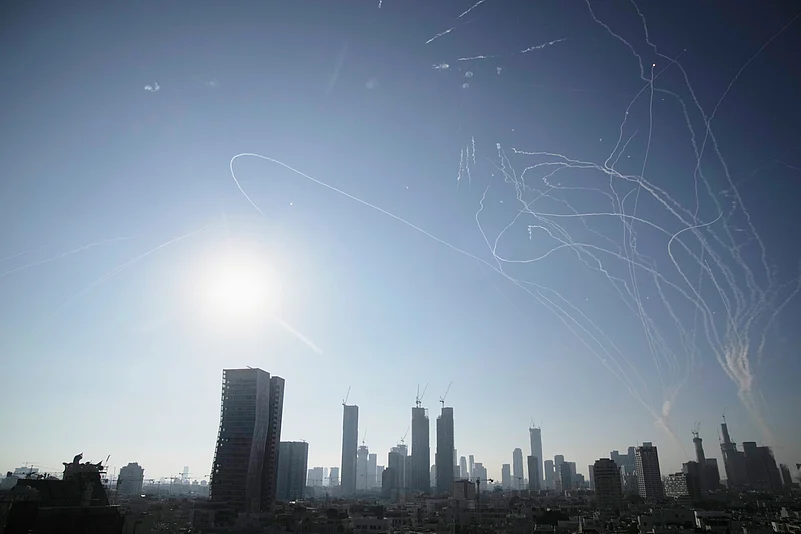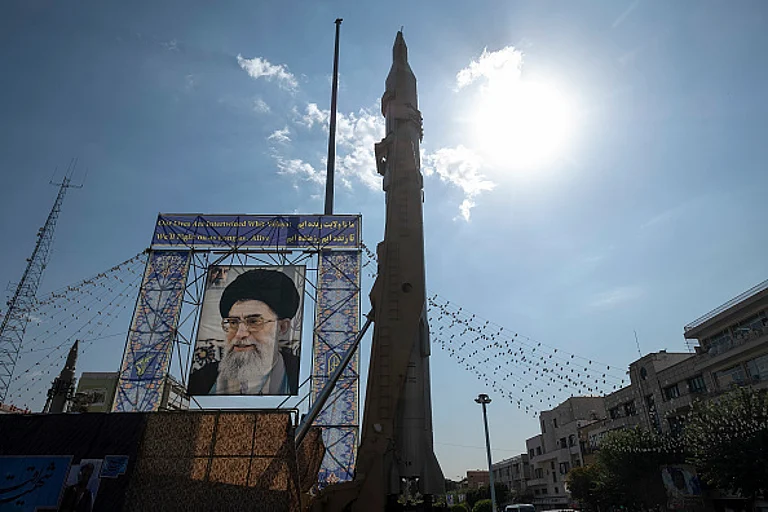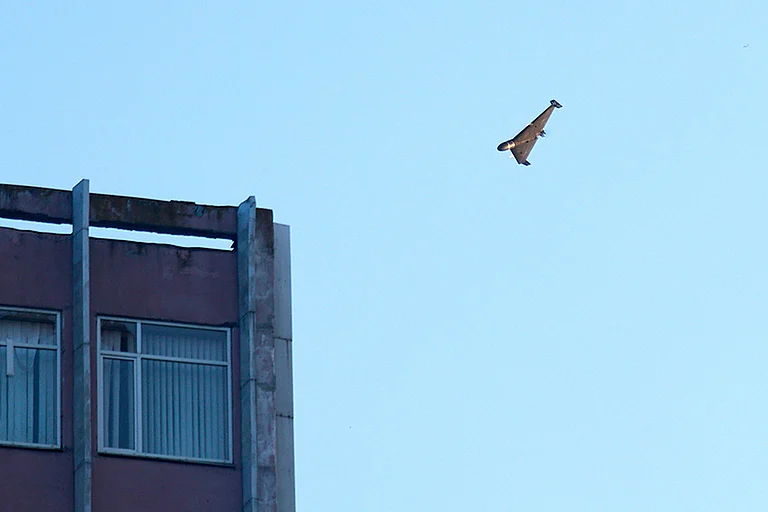The spiralling conflict in West Asia involving Israel and Iran is nowhere close to de-escalation. Marking a sharp escalation in the week-long trading of missile attacks, the Israel Defense Forces (IDF) on Thursday reportedly claimed that Iran fired at least one ballistic missile containing cluster munitions, which scattered small bombs across places in an attempt to increase civilian casualties.
While Israel, on June 13, reignited the conflict with its 'pre-emptive' missile strikes targeting Iran's nuclear sites, Tehran, in a latest development, reportedly retaliated by firing missiles armed with cluster munitions, marking the first reported use of such weapons in the ongoing conflict.
Quoting the IDF Home Front Command, The Times of Israel reported that the warhead of the ballistic missile carrying the clustered bomb split while descending, at an altitude of around 7 kilometres, spreading around 20 smaller munitions at a radius of around 8 kilometres.
Cluster Bombs: What Are They?
Cluster bombs are considered a part of cluster munitions, which scatter smaller bombs across large areas to cause greater casualties during conflicts.
They are known to consist of a hollow shell, which, upon being dropped from the air or fired from the ground, breaks open in mid-air and releases smaller bombs, also known as submunitions.
These cluster bombs are not precise in their target, and their trajectories can be affected by weather and other environmental factors. They may therefore hit areas outside the military objective targeted.
What poses a deadly risk to the civilians is the fact that some of these smaller bombs may not explode immediately upon landing and can kill civilians and unintended targets long after a conflict has ended.
Cluster Bombs Vs Traditional Missiles
While a standard ballistic missile causes destruction through one concentrated blast, cluster munitions are designed to spread destruction across a wider area, leading to greater casualties.
Quoting a senior Israeli military official, The Times of Israel reported that although each munition is less powerful, such a missile poses threat to a much wider area than other standard ballistic missile warheads.
This makes them dangerous in populated zones, where the smaller munitions may hit civilians, homes, or infrastructure.
Are Cluster Bombs Banned?
Owing to its indiscriminate nature and the tendency to leave behind the unexploded yet active submunitions, the , an international treaty, imposed a strict ban on the "use, development, production, acquisition, stockpiling and transfer of cluster munitions, as well as the assistance or encouragement of anyone to engage in prohibited activities."
A total of 111 countries and 12 other entities signed the treaty, while key military powers, including Iran, Israel and the US, had refused to join the it.
First Use Of Cluster Bombs: History
According to the, cluster munitions were first used in World War II, and a large amount of stockpiled cluster munitions were designed during the Cold War.
In a debatable move, the United States supplied cluster munitions to Ukraine in 2023 to aid in its defence against Russian forces.
In March 2025, Kyiv alleged that Russia had also used cluster munitions to attack Ukraine바카라™s eastern region of Dobropillia, and killed 11 people, while wounding 40 others.

















